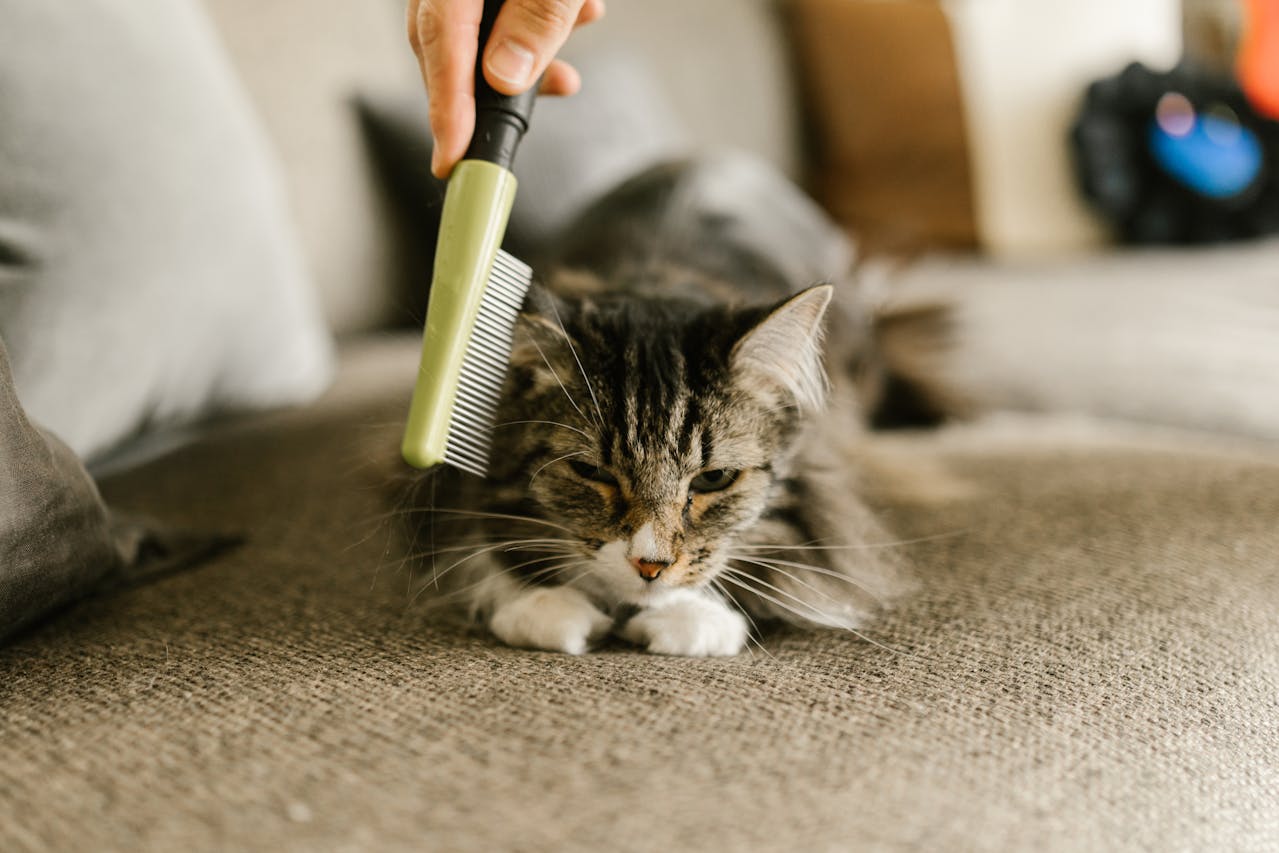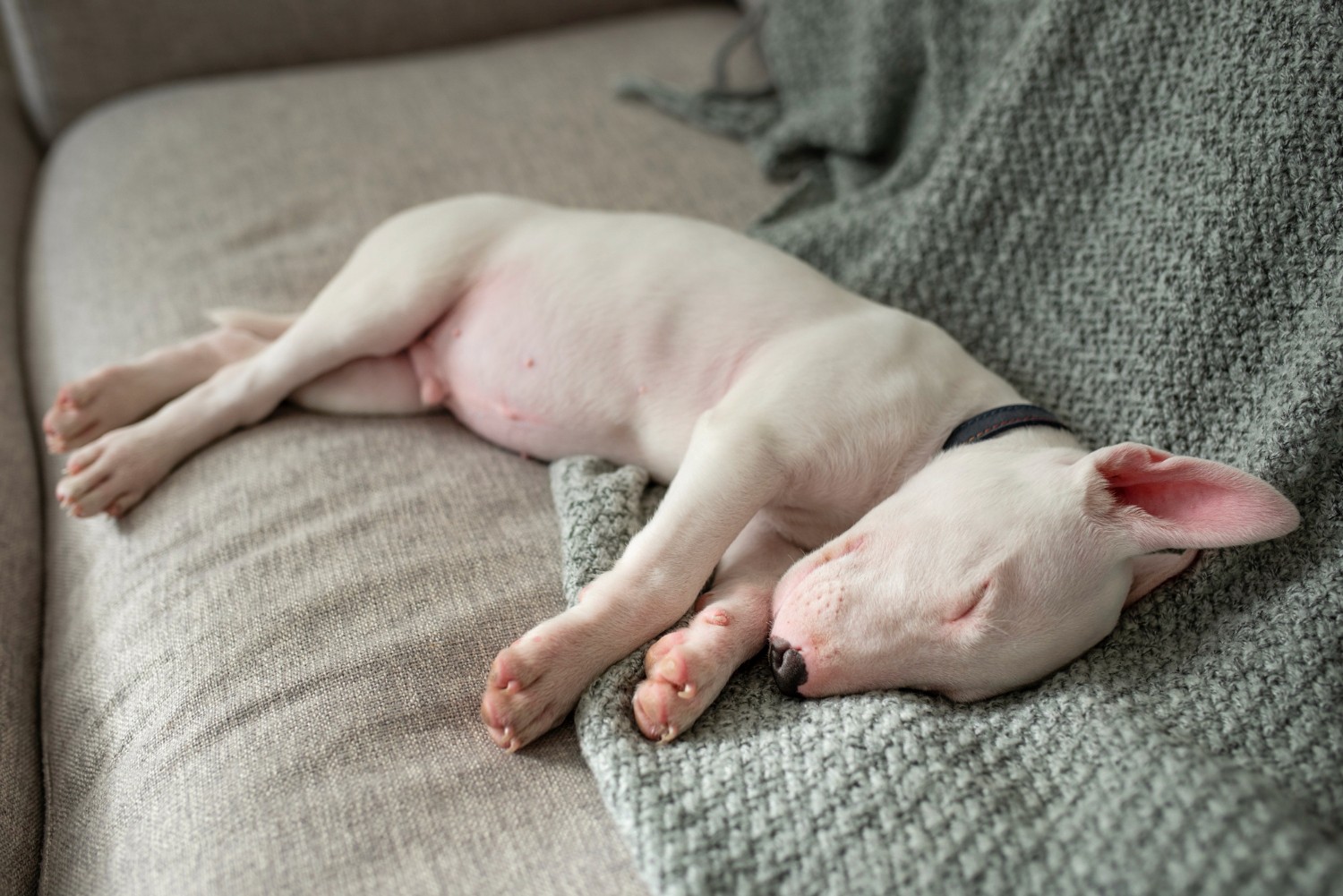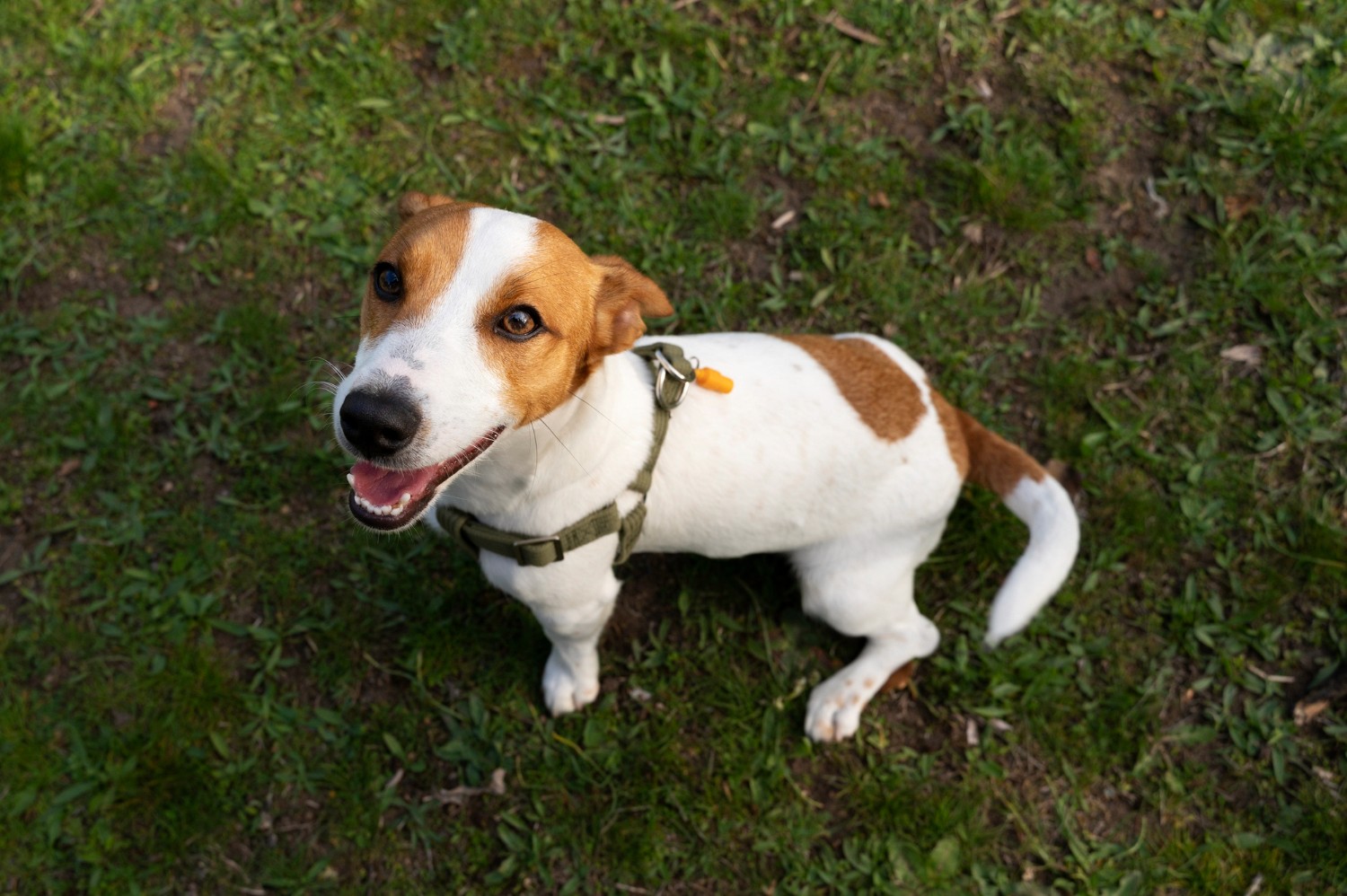Dogs
Jul 11, 2025
Bringing home a new puppy is a joyful moment, but it also comes with real challenges, especially when it comes to potty training dogs.
If you're feeling unsure, frustrated, or just tired of cleaning up accidents, you're not alone. Potty training is one of the first big tasks for any dog owner, and it can take time and patience to get right.
The good news? With a few simple strategies, potty training dogs can be faster and less stressful than you think. This guide shares realistic tips to help you build habits that last. Whether you're new to dog ownership or just need a refresher, we’ve got you covered.
1. Establish a Routine That Teaches Your Puppy When to Go
The best way to potty train your puppy is by establishing a consistent daily routine. Potty training dogs works best when things happen at the same time every day. That means regular times for eating, playing, sleeping, and of course, going to the toilet. A set routine helps your puppy’s body and brain learn when it’s time to go potty, which makes accidents less likely.
The best way to potty train your puppy is by establishing. Puppies learn best when things happen at the same time every day. That means regular times for eating, playing, sleeping, and of course, going to the toilet. A set routine helps your puppy’s body and brain learn when it’s time to go potty, which makes accidents less likely.
Here is a sample routine for when to take your puppy out:
First thing in the morning
After every meal or drink
After naps
After playtime
Right before bed
You may feel like you’re going outside every hour, and honestly, at first, you probably will be. But that’s completely normal. Puppies have tiny bladders, and they’re still learning. The more often you take them out, the more chances they have to get it right.
2. Crate Training: A Key Tool for House Training
Crate training is a reliable way to teach your puppy when and where to go to the toilet. It supports bladder control, reduces accidents, and helps establish a routine, which are key steps in successful potty training dogs.
Dogs naturally avoid relieving themselves where they sleep. A crate that fits just right encourages this instinct. It should be:
Just large enough for your puppy to stand, turn around, and lie down.
Not too spacious, so they don’t treat one end as a toilet.
The crate should feel like a secure and inviting space. Add soft bedding, include a favourite toy, and make it a place where your puppy can relax. Use praise to reinforce calm behaviour inside the crate. To begin:
Crate your puppy for short intervals while you’re nearby.
Let them out promptly and take them outside for a toilet break.
Praise them when they go in the right spot.
This helps your puppy associate crate time with potty time, strengthening the habit. It’s important not to leave your puppy in the crate for too long. A general guide is one hour for every month of age. For example, a 2-month-old puppy should not be crated longer than two hours without a break.
Crate training takes time, but when done right, it lays the foundation for consistent and stress-free house training.
3. Scheduled Feeding Helps Regulate Bathroom Routines

Feeding your puppy at the exact times every day helps regulate their digestion, making potty habits more predictable. When meals are given randomly, bathroom needs often become unpredictable too, which can turn potty training dogs into a frustrating guessing game.
A consistent schedule, such as feeding in the morning, midday, and early evening, helps your puppy develop a routine. After each meal, wait about 15 to 30 minutes, then take them outside to their usual potty spot to reinforce the habit.
It’s also essential to monitor water intake. While your puppy should always have access to clean, fresh water during the day, consider picking up the water bowl two to three hours before bedtime. This reduces the chance of nighttime accidents and helps both you and your puppy get uninterrupted sleep. With regular meal times, a consistent diet plan, and mindful water management, your puppy will be on track to develop reliable bathroom habits more quickly.
4. Pick a Dedicated Potty Spot So Your Puppy Knows Where to Go
One of the most effective ways to speed up potty training dogs is to take your puppy to the same spot every time. Puppies learn through repetition, and using a consistent location helps them associate that area with going to the toilet. Just walking toward the spot can eventually trigger the urge. Choose a quiet area in your yard, a nearby park, or use potty pads if you live in an apartment. Keep distractions to a minimum and guide your puppy calmly to the same place each time.
While your puppy is going, use a simple cue like “Toilet” or “Go wee” to help them connect the word with the action. This can be especially helpful later in unfamiliar settings. As soon as they finish, offer praise and a small treat to reinforce the good behaviour. Positive reinforcement builds the habit and helps your puppy understand they’ve done the right thing.
5. Supervise Closely to Prevent Accidents Before They Happen
Most accidents happen when no one’s looking. Puppies can’t hold it for long, and they often give small signs before they go, sniffing, circling, whining, or suddenly wandering off. If you notice those behaviours, take them out right away to prevent messy accidents. Being alert to these cues is a big part of successfully potty training dogs.
Keep your puppy in the same room you’re in whenever possible. You can use a playpen, baby gate, or even a leash clipped to your belt to keep them nearby. It may feel like a lot of effort now, but this stage won’t last forever.
If you can’t watch them, it’s okay to use the crate or a safe, puppy-proofed space for a short time. That way, they won’t sneak off and have an accident without you knowing.
6. Use Potty Training Pads Only When Necessary

Potty training dogs can sometimes require extra tools, and potty training pads can be helpful in certain situations, such as:
Living in a high-rise building
Extreme weather conditions
Long work hours that limit outdoor trips
However, pads should only be used when absolutely necessary. While they can be convenient, they may slow down potty training by teaching your puppy that it’s acceptable to go indoors, even if it’s in a designated spot. This can create confusion later on when transitioning to outdoor toileting.
If you need to use pads, keep them in one spot and treat it like an outdoor toilet area. Gradually move the pad closer to the door, then outside, to ease the transition. Some puppies may confuse pads with rugs or towels, so use them carefully and constantly praise your puppy when they use the pad correctly.
7. Reward Every Successful Potty Trip With Praise and Treats
Always reward your puppy right after they pee or poop in the right spot; it’s one of the most important parts of potty training dogs. Puppies don’t naturally know what’s right or wrong, but when you praise them with kind words, a cheerful tone, or a small treat right after they go, they start to connect the dots.
The timing matters. Reward them immediately after they finish, not once you’re back inside, or they might not understand what the treat was for. You can use quick snacks, a happy voice, or a gentle pat, whatever suits your pup. It doesn’t have to be a big celebration, just enough to show they did well. With consistency, they’ll be excited to go to the right place, not just to please you but because they enjoy the routine.
8. Handle Accidents Calmly Without Punishment

Accidents are part of the learning process, even if it feels frustrating. Scolding or yelling doesn’t help your puppy learn. It just makes them anxious or confused, and may even lead them to hide where they go next time. Staying calm is key when potty training dogs.
If you catch them mid-accident, gently interrupt with a calm “ah-ah” or “no,” then guide them outside to their toilet spot. If they finish there, offer praise. Always clean up messes thoroughly with a pet-safe cleaner to remove any lingering scent. Stay patient. The calmer you are, the more secure and successful your puppy will feel.
9. Know When to Consult a Vet or Trainer for Extra Help
If your puppy is still having frequent accidents, even with consistent training, it might be time to get some expert help. Sometimes, potty training dogs comes with unexpected challenges caused by medical issues like urinary tract infections or digestive problems.
If your puppy seems to be going far more often than usual, is struggling to hold it, or suddenly starts having more accidents, check in with your vet to rule out any health concerns. The team at Noble Veterinary Clinic can guide you through these concerns and provide the proper care if needed.
If your puppy gets the all-clear but you’re still finding it hard, a certified dog trainer or behaviourist can offer personalised advice. We’ll help you spot patterns, improve your routine, and support your potty training efforts. There’s no shame in asking for help, puppies are all different, and some just take a little longer or need a slightly different approach.
10. Be Consistent and Patient, Potty Training Takes Time
Every puppy learns at their own pace. Some catch on quickly, while others take a few weeks or longer to fully understand. That’s completely normal. The key to successfully potty training dogs is consistency, stick to the same routine, use the same cues, and offer rewards every time they get it right.
Try not to make too many changes at once, and avoid giving your puppy too much freedom too soon. Keep reinforcing the steps that are working and trust the process. Celebrate small wins, like a full accident-free day, and don’t let the occasional setback discourage you. Over time, your puppy will learn what’s expected, and those messy early days will fade away.
You're not alone, and you’re doing better than you think. Stay patient. It’s all part of raising a happy, well-trained dog.
Frequently Asked Questions
1. How long does it usually take to potty train a puppy?
Potty training can take anywhere from a few weeks to several months, depending on your puppy’s age, breed, and your consistency. Most puppies start to show progress within 2–4 weeks when trained with a routine.
2. What if my puppy keeps having accidents inside the house?
Accidents are normal in the early stages of potty training dogs. Stay calm, clean up thoroughly with an enzyme cleaner, and revisit your routine. If the issue continues, consult your vet or a trainer to rule out health or behavioural concerns.
3. Should I wake my puppy up at night for potty breaks?
Yes, especially for very young puppies. Until they're around 12–16 weeks old, their bladders can’t hold it overnight. Set an alarm every 2–4 hours or observe if they wake up and whine or move restlessly.
4. Are potty training pads bad for dogs?
Pads can be helpful in the short term, but overuse may delay outdoor training. Use them only when necessary and gradually transition your puppy outside to avoid confusion.
5. When should I ask for professional help with potty training?
If your puppy is older than six months and still having frequent accidents despite a steady routine, or if you're feeling overwhelmed, it’s a good time to reach out to a vet or certified dog trainer for guidance.





